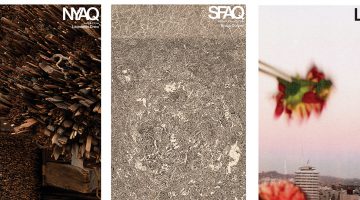Opening tomorrow, October 3rd at Gregory Lind Gallery in San Francisco is Dannielle Tegeder’s “The Library of Abstract Sound,” bringing together the artist’s large- and small-scale drawing, as well as animation and sound. Her works, which employ strategies connected to 20th century abstraction, present high-tech systems ranging from electric lines to wireless networks, funneled through a Suprematist lexicon. Tegeder, who was born to a family of steamfitters, easily evokes the trade’s architectonic schematics in everything from her early abstract drawings to her paintings of post-apocalyptic realms. Given her new experiments, her current work ventures into more abstract territory, exploring the intersections and boundaries between drawing and sound.
The show comprises a recent collection of 100 drawings scanned into a software program that was designed specifically as an interpretive device—a method that summons to mind the technological forays of Constructivist art. The algorithm translated Tegeder’s lines, colors, and forms into unique sound equivalents. Each individual drawing has its own musical arrangement, which will be played in the gallery space as the drawing is displayed on a monitor. As specific shapes trigger automated sounds, those areas of the drawing will be highlighted on the screen. In this sense, the animated drawings are not interpretive, but rather, image-to-sound transcriptions meant to create aural correspondents for the viewer/listener.
In Tegeder’s project, there is a clear interplay between geometry, color, and line: fan shapes, linear trapezoids, triangular clusters, wheels of color, and shards of light intersect and overlap, with no apparent conflict or competition for dominance. These elements seem almost independent and self-sufficient, coexisting in space and interacting accordingly—much like notes in a musical score that are choreographed to harmony. The large drawings delineate a series of futuristic architectural fantasies that reimagine the modernist architecture of our urban landscape, bringing into play the visible and invisible systems of daily life. They are a continuation of a ten-year exploration of creating fictional urban cities.
For more information visit here.



